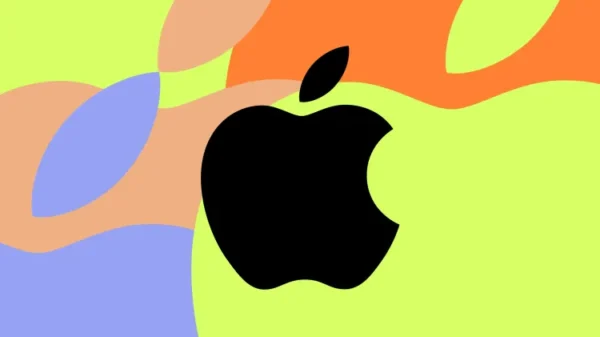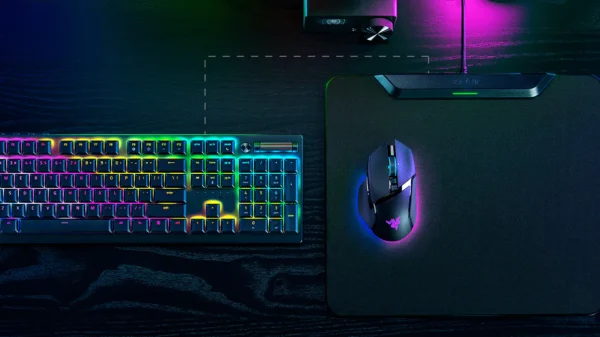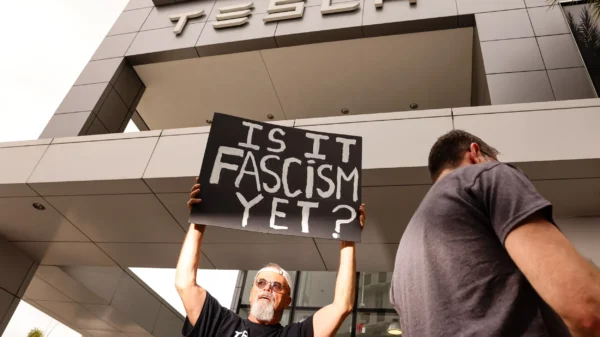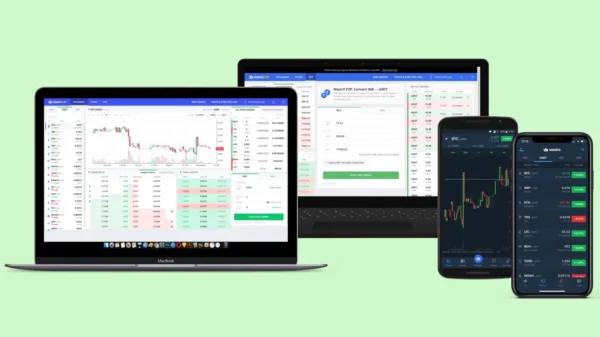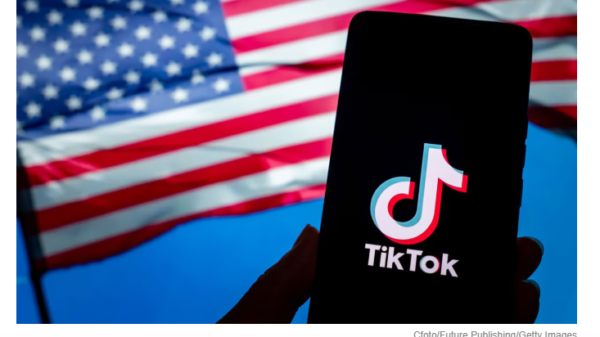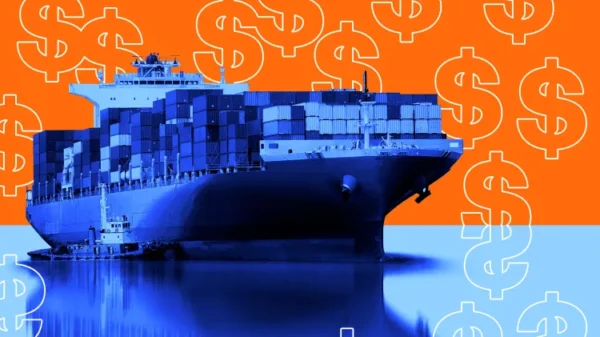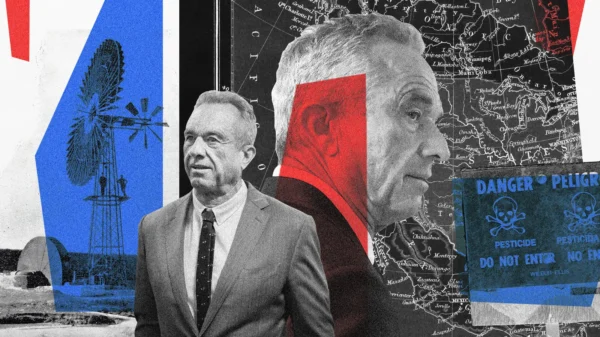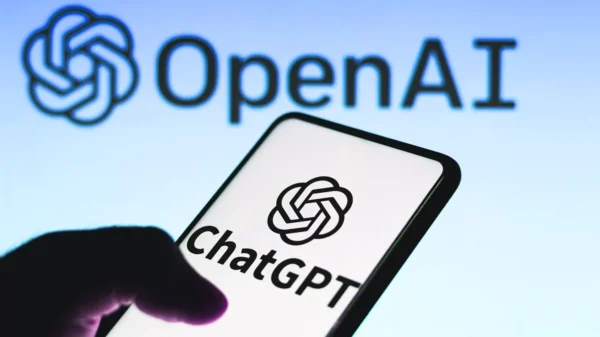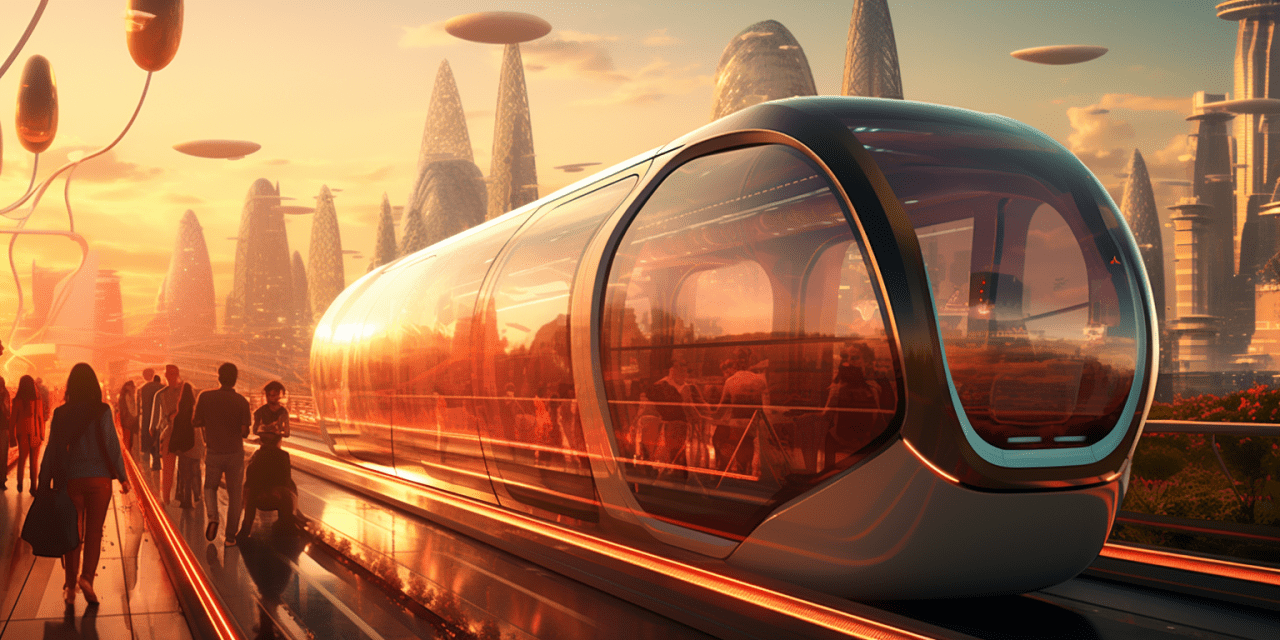AI-Driven Efficiency: In the ever-evolving ballet of movement and progress, a silent revolution is taking place—one where artificial intelligence takes the wheel and navigates the intricate tapestry of transportation. Buckle up, for we’re about to embark on a journey into a world where self-driving trucks orchestrate highways, traffic patterns dance to the tune of algorithms, and public transit transforms into an enigmatic blend of technology and human movement.
Key takeaways:
- AI is changing transportation, including self-driving trucks and better traffic flow.
- Traffic jams could decrease with AI-controlled signals and predictive maintenance.
- Public transit is improving with real-time updates and smoother travel experiences.
- AI needs collaboration between the public and private sectors to succeed in transit.
- Challenges include making AI transit accessible to everyone and managing costs.
- The future of transportation relies on teamwork between humans and AI.
In the bustling heart of our modern world, where every second counts and movement is the rhythm of life, transportation plays a pivotal role. It weaves together the threads of our daily routines, connecting us to places and people. Yet, beneath the surface of this intricate dance of commutes and cargo, a revolution is underway—one fueled by the enigmatic prowess of artificial intelligence. As we peer through the looking glass of innovation, we glimpse the dawn of a new age in transportation, where self-driving trucks navigate the asphalt arteries, traffic flows like a symphony, and public transit transforms into a seamless tapestry of convenience.
Step into a realm where trucks, those behemoths of the roadways, awaken to a life of autonomy. The concept of self-driving trucks may sound like something ripped from the pages of science fiction, but here and now, in the realm of possibility, it’s becoming a tangible reality. These mechanical giants, guided not by human hands but by the intricate dance of algorithms, promise a new chapter in freight transportation. Imagine trucks gliding along highways, orchestrated by lines of code, revolutionizing delivery accuracy and unraveling the knots of congested schedules. It’s a prospect that leaves us simultaneously exhilarated and contemplative as we marvel at the technological leaps while considering the implications for the workforce that once guided these mechanical colossi.
Yet, the dance doesn’t stop there. In the maddening labyrinth of city streets, where traffic congestion reigns as a universal woe, artificial intelligence unveils its prowess. The symphony of car horns and brake lights, once a dissonant chorus, now moves in orchestrated harmony. AI-powered traffic management systems, akin to maestros of order, analyze real-time data from sensors, cameras, and satellites, crafting a masterpiece of traffic flow. Picture the serene possibility of reduced travel times, lowered fuel consumption, and cityscapes adorned with cleaner air. The economic and environmental crescendo of AI-driven traffic optimization beckons us toward a future where the hustle and bustle of our urban existence becomes a smoother, more efficient cadence.
And within the hustle, the heartbeat of urban life thrives: public transit. The lifeline for millions, it has long grappled with reliability, scheduling, and the cacophony of crowded carriages. Enter the realm of AI-enhanced public transit, where commuters are empowered by real-time updates and seamless travel planning. The labyrinthine puzzle of public transportation becomes a game with a clear path, where predictive maintenance ensures the gears keep turning and intersections between buses, subways, and shared rides are navigated with ease. As we peer ahead, the future of public transit emerges, marked not by disarray but by the harmonious hum of technology and human need intersecting in remarkable synchrony.
The Emergence of Self-Driving Trucks
Enter the realm of trucking, where the behemoths of the roadways are shedding their reliance on human hands. Yes, you heard it right—we’re talking about self-driving trucks, those mammoths of the asphalt expanse, morphing into the pioneers of autonomous mobility. It’s like watching science fiction meld with reality—a fusion of gears and algorithms that has us all rubbing our eyes in disbelief and awe.
Imagine it: these colossal machines, once guided solely by the skillful grip of truckers, are now tapping into the uncharted terrain of artificial intelligence. They’re strapping on a new kind of driver’s cap—one woven with intricate lines of code and virtual synapses that navigate highways and byways with uncanny precision. It’s as though the trucks have entered a new era of self-discovery, testing the waters of autonomy and giving a nod to the possibilities that technology has conjured.
In this brave new world, the advantages of self-driving trucks are like stars twinkling in the night sky—numerous and dazzling. Safety takes center stage, a dramatic performance where algorithms don the roles of vigilant sentinels, scanning surroundings, and making split-second decisions that put human reflexes to shame. Accidents caused by drowsy drivers or lapses in concentration could become as mythical as unicorns—relics of a bygone era.
Efficiency takes a bow next, with self-driving trucks waltzing through their routes with the elegance of a seasoned ballroom dancer. Think about it: no more mandatory rest breaks or mandatory coffee pit stops. These trucks are made of metal and microchips, immune to exhaustion, and determined to keep things moving at an unrelenting pace. This could mean faster deliveries and goods zipping across the map like messages in a bottle carried by the winds of progress.
But—oh, there’s always a “but,” isn’t there?—this transition to the autonomous realm isn’t without its speed bumps. Skeptics raise their eyebrows and furrow their brows, wondering about the delicate interplay between technology and human touch. They ponder the fate of the truckers who once gripped those steering wheels, weathering the open road’s solitude and serenity. As these machines gear up to seize the wheel, questions loom large: What happens to those skilled hands, those stories etched on the roadmaps of time? The road to the future, it seems, is winding and complex, adorned with both the allure of progress and the shadows of uncertainty.
Benefits and Impacts on the Freight Industry
Now, hold onto your hats—we’re about to unravel the grand tapestry of advantages that self-driving trucks are unspooling across the vast landscape of the freight industry. It’s like watching a magician pull rabbits out of hats, only this time the magic is in the form of algorithms and automation, conjuring a symphony of transformation.
First and foremost, picture this: a world where delivery accuracy is as precise as a laser-guided missile. Self-driving trucks are painting a canvas of reliability, erasing the smudges of human error and unpredictability. They’re not bogged down by distractions or fatigue—those quintessential human frailties that have occasionally caused deliveries to dance to a disjointed rhythm. With algorithms as their choreographers, these trucks move with harmonious precision, ensuring packages arrive at their destinations with the accuracy of a well-practiced pianist hitting the right notes.
And let’s not sidestep the elephant in the room—or, should we say, the elephantine traffic congestion that’s been a perpetual thorn in the freight industry’s side. Self-driving trucks have slipped into the role of urban maestros, orchestrating the movement of goods with uncanny finesse. They’re like traffic ninjas, navigating through gridlock with the grace of a dancer and the decisiveness of a chess grandmaster. Imagine the ripple effects: reduced idle time, swifter transit, and a freight industry that seems to have learned the art of teleportation.
What about the very fabric of economics that weaves through this industry? Brace yourselves, because the impact is nothing short of revolutionary. Labor costs, once a weighty anchor dragging down profit margins, are now poised to take a backseat. Self-driving trucks don’t ask for overtime pay, they don’t send in sick leave notices, and they certainly don’t need to be trained in defensive driving. This newfound efficiency could lead to a bottom-line boom, an economic jig where the freight industry dances its way into higher profitability.
But, as with any magic trick, there’s a sense of wonder and skepticism intermingling. A whisper in the wind asks, “What about those truckers who once wore the mantle of kings of the road?” It’s a fair question, one that peers into the shadows cast by technological marvels. As self-driving trucks surge forward, there’s an air of uncertainty that follows, and a cloud of job displacement concerns gathers on the horizon. What happens to those who once held the reins? Can a machine replicate the camaraderie of truck stop conversations or the kinship formed by miles traveled together? These are the riddles that lie nestled within the unfolding enigma of self-driving trucks.
Traffic Congestion as a Global Issue
Alright, let’s dive headfirst into the swirling vortex of chaos that we affectionately call “traffic congestion.” If life were a screenplay, traffic jams would be the villains that emerge at the most inconvenient of moments, thwarting our well-laid plans and reducing the calmest of souls into frenzied honking conductors of impatience. It’s a phenomenon that transcends borders and cultures, uniting humanity in a shared exasperated sigh.
Picture it: urban landscapes transformed into mazes of brake lights and bumper-to-bumper monotony. The city streets, once arteries of progress, now resemble arteries clogged by the fatty deposits of too many vehicles and too little planning. It’s like witnessing a slow-motion dance of frustration, a symphony of car horns and muttered expletives that echo through the concrete canyons.
But wait, it gets even more perplexing. Traffic congestion isn’t just an inconvenience; it’s a heavyweight contender in the ring of global challenges. The economic consequences are no less than staggering. Time wasted in traffic jams translates to dollars down the drain, as productivity takes a nosedive and supply chains turn into snail-paced parades. The environment takes a hit too; every rev of an idling engine, every inch crawled forward, is a puff of exhaust that contributes to the ominous cloud of air pollution and greenhouse gases.
And let’s not forget the human factor in this bewildering equation. Commuters, those brave souls who navigate the asphalt jungle day in and day out, are caught in the crossfire. Picture this: a sea of frustrated faces peering out from behind steering wheels, a cacophony of sighs and weary glances at the ever-ticking clock. It’s a soul-sapping scenario where precious moments that could be spent with loved ones or pursuing passions are instead swallowed by the abyss of congestion.
The perplexity deepens when we realize that traffic congestion isn’t just a local woe; it’s a global tangle of knots that ties cities and countries together in a web of shared bewilderment. From New York to New Delhi, London to Lagos, the story is eerily similar—too many cars, too few roads, and a maddening puzzle that’s eluding a straightforward solution.
AI-Powered Traffic Management Systems
Okay, hold onto your hats because we’re about to plunge headfirst into the electrifying realm of AI-powered traffic management systems. Imagine, if you will, a digital symphony of ones and zeros orchestrating the grand ballet of vehicles through city streets. It’s like traffic control on steroids—a high-octane fusion of technology and chaos that’s rewriting the rules of the road.
So, let’s break it down. We’re talking about algorithms—those elusive lines of code that have evolved from mere mathematical abstractions to the maestros of our urban mobility. These algorithms, fueled by data collected from sensors, cameras, and satellites, are akin to the omniscient eye in the sky, watching over the intricate web of vehicles and deciphering their collective dance.
It’s like a real-life video game, with traffic lights transforming into sentient beings, reacting not to preordained schedules but to the ebb and flow of actual traffic. These AI-driven systems are as adaptable as chameleons, adjusting signal timing in real-time based on the rhythm of congestion. Think about it: instead of sitting at a red light while an empty intersection mocks you, these systems analyze the immediate context and give the green light when it’s most deserved. It’s like an urban waltz, with the algorithms leading the way.
But here’s where things get delightfully baffling: these systems aren’t just reactive; they’re predictive. Picture a crystal ball that gazes into the future of traffic, foreseeing bottlenecks before they become insurmountable mountains of frustration. It’s as though AI is imbued with the power of foresight, warning commuters of impending jams and suggesting alternate routes. The result? An enchanting dance where vehicles glide through the streets with an elegance that defies the tangled mess of rush hour chaos.
And let’s not overlook the environmental crescendo that accompanies this technological marvel. With traffic management systems fine-tuning the choreography of vehicles, we’re looking at reduced fuel consumption, which translates to fewer carbon footprints tattooed on the earth’s surface. It’s like a serenade to sustainability, a harmonious duet between AI and the planet that resonates with promises of cleaner air and a greener future.
But—and there’s always a “but”—the complexity of human behavior adds another layer to this enigmatic equation. Commuters, with their unpredictable choices and whims, sometimes break the spell cast by these AI wizards. It’s a reminder that, while algorithms may be powerful, they’re not omnipotent. The tangle of human intuition and irrationality can throw a curveball, leaving these systems momentarily puzzled, like a conductor facing an unruly orchestra.
Societal and Environmental Benefits
Hold onto your seats, because we’re about to dive headlong into a world where the intersection of AI and transportation brings forth a cornucopia of societal and environmental benefits. It’s like catching a glimpse of the future through a kaleidoscope of innovation—a future where the way we move is reimagined and revitalized.
Imagine stepping into a reality where rush hour is no longer synonymous with grinding to a halt on the asphalt canvas. With AI in the driver’s seat of traffic optimization, the very fabric of urban life transforms into a smoother, more harmonious melody. Reduced travel times have become the anthem of the masses, freeing up precious minutes that were once devoured by traffic’s insatiable appetite. It’s like an escape from the clutches of chronically congested roadways, a reprieve that allows us to reclaim those stolen moments for pursuits more meaningful than glaring at taillights.
And then there’s the matter of fuel consumption—that sneaky thief that creeps into our wallets and the environment alike. With AI-powered traffic management orchestrating the movements of vehicles, fuel efficiency becomes a virtuoso performance. Picture it: cars gliding through green lights with the precision of a synchronized dance, engines purring contentedly rather than guzzling fuel voraciously. It’s like a silent revolution—a shift toward sustainability that paints a rosier hue on our carbon footprint canvas.
But the benefits don’t end with convenience and efficiency; they ripple outward, touching the very air we breathe and the landscapes we call home. You see, when traffic flows like a harmonious symphony, emissions take a dip, and the atmosphere breathes a sigh of relief. Air quality improves, casting a clearer, more vibrant backdrop against which our lives unfold. It’s like a gift to our cities—a breath of fresh air that whispers promises of health and vitality.
But—and here’s the twist—this utopian vision isn’t devoid of challenges. The road to these benefits isn’t a straight, smooth path; it’s a winding trail with its share of bumps and pitfalls. Skepticism lingers in the shadows, asking whether the promises of AI-powered transportation can truly outweigh the complexities of implementation. The intricate dance of technology and society brings forth questions about privacy, security, and the vulnerability of our data in this digital age.
Challenges in Public Transit
Let’s take a detour into the realm of public transit, where the journey often resembles a labyrinthine puzzle with twists and turns that perplex even the most seasoned commuter. It’s like a riddle we collectively grapple with, a saga of challenges that leave us scratching our heads and yearning for solutions that seem as elusive as the end of a rainbow.
Ah, the perennial woe of reliability—a specter that looms large over the realm of public transit. It’s as if the gods of punctuality are playing a cosmic game of hide-and-seek, and we, the commuters, are left wandering in a haze of uncertainty. Buses that arrive fashionably late, trains that mysteriously disappear from schedules, and the eternal struggle of catching the elusive “on-time” departure—it’s a saga of frustration that tests the limits of our patience.
But the chaos doesn’t stop there. Scheduling, that intricate dance of coordinating routes and times, often resembles a high-stakes game of chess with no clear winner. It’s like a delicate symphony that occasionally slips into discord, leaving passengers bewildered as they attempt to piece together a puzzle of connections and transfers. The promise of seamless travel sometimes gives way to missed opportunities and hours lost in transit.
And then there’s the ever-present nemesis: overcrowding. Public transit, at its peak, becomes a labyrinth of bodies squeezed into tight spaces, a reminder that personal space is often a luxury traded for the convenience of communal travel. It’s like a jigsaw puzzle with too many pieces, a challenge that commuters face daily as they navigate the chaotic tapestry of crowded stations and packed carriages.
But here’s where it gets intriguing: these challenges aren’t just local grievances; they’re the threads that weave through the global fabric of public transit. From Tokyo to Toronto, Mumbai to Madrid, the story resonates with a familiar tune: one of overcrowded platforms, unreliable schedules, and the collective frustration of commuters trying to decipher the ever-changing transit enigma.
AI-Enhanced Public Transit Systems
Alright, folks, hold onto your hats because we’re diving headlong into the realm of public transit, where AI steps onto the scene like a whirlwind of innovation. It’s like watching a magician conjure tricks that transform the mundane into the extraordinary—a symphony of algorithms that promises to redefine the very essence of how we traverse our urban landscapes.
Picture this: you’re standing at a bustling transit station, a sea of faces swept along by the currents of daily routine. But something’s different—the air crackles with electric anticipation as AI-powered systems work their magic behind the scenes. Say goodbye to the guessing game of when the next bus or train will arrive. With real-time updates and predictive precision, AI takes the wheel, offering commuters a lifeline of information that transforms the waiting game into an exercise in calculated anticipation.
But wait, there’s more. Step onto that train, and you’ll find yourself in the embrace of a system that’s not just reactive but proactive. AI algorithms peer into the future like seers of old, predicting congestion, delays, and even potential disruptions. It’s like having a crystal ball that guides your journey, steering you away from pitfalls and toward a smoother passage. As you glide along the tracks, you’re no longer just a passenger; you’re part of an interconnected dance where technology and human movement merge in a mesmerizing rhythm.
And let’s not forget the wizards of predictive maintenance, those unsung heroes that ensure your transit experience is as seamless as a perfectly orchestrated melody. AI sensors monitor the health of vehicles and infrastructure, detecting anomalies before they snowball into catastrophes. It’s like having a guardian angel watching over the tracks, preventing breakdowns and unexpected detours. The result? Reduced downtime, fewer headaches, and a public transit system that runs like a well-oiled machine.
But—and here’s the twist—this symphony of AI-enhanced public transit isn’t without its challenges. The enigma of human behavior—that wild card that likes to throw curveballs—adds an extra layer of complexity. Commuters, with their whims and quirks, occasionally defy even the most finely tuned algorithms. It’s a reminder that while technology may be powerful, it’s still entwined with the unpredictability of the human experience.
The Path Forward for Public Transit
Alright, folks, let’s shift gears and steer our attention toward the road ahead for public transit, where AI stands as a guiding light in a world rife with challenges and opportunities. It’s like standing at a crossroads, gazing into a fog-laden horizon that beckons with both uncertainty and promise.
Imagine a cityscape where public transit seamlessly integrates with other modes of transportation, creating a tapestry of mobility that’s as fluid as a brush stroke on canvas. AI serves as the glue that binds buses, subways, shared rides, and even bicycles into a harmonious symphony of movement. It’s like watching a jigsaw puzzle come together, with each piece finding its place in the grand mosaic of urban mobility.
But here’s where it gets intriguing: the path forward isn’t just about technology; it’s about collaboration between the public and private sectors. It’s like a delicate dance between partners with distinct roles, where government agencies and tech innovators waltz together in pursuit of a common goal. The fusion of expertise, resources, and visions creates a dynamic synergy that fuels the evolution of public transit. It’s a reminder that progress isn’t a solo act; it’s a collective effort that’s as much about communication and cooperation as it is about coding and algorithms.
And speaking of codes and algorithms, let’s not overlook the challenge of striking a balance between technology adoption and accessibility. The promise of AI-powered public transit is tantalizing, but it must be accessible to all, regardless of socio-economic status or technological literacy. It’s like composing a melody that resonates with both the tech-savvy and the tech-shy, ensuring that everyone can tap into the benefits that AI brings to the transportation table.
But—and here’s where the plot thickens—the road forward isn’t devoid of potholes and pitfalls. Budget constraints, political dynamics, and the ever-present specter of resistance to change cast shadows on this journey. Navigating this labyrinth of hurdles requires not just technological prowess but also the finesse of diplomacy and the grit of determination.
As we roll ahead in our exploration, buckle up for stories from cities where the path forward for public transit has been paved with ingenuity and innovation. It’s a tale of partnerships and perseverance, of navigating through the fog of uncertainty toward a future where public transit isn’t just a means of getting from point A to point B but a transformative force that shapes the very fabric of our urban existence.


